The recent change in @CDCgov policy regarding masking has prompted a lot of people to ask: do #COVID19 #vaccines block transmission of the virus to others? Here is a 🧵using slides my colleagues and I put together recently. @DrJRMarcelin @ElizabethRBrow2
Slides made by me (Harvard), Audrey Pettifor (UNC), Jasmine Marcelin (UNMC), and Holly Janes and Elizabeth Brown at the Hutch. 
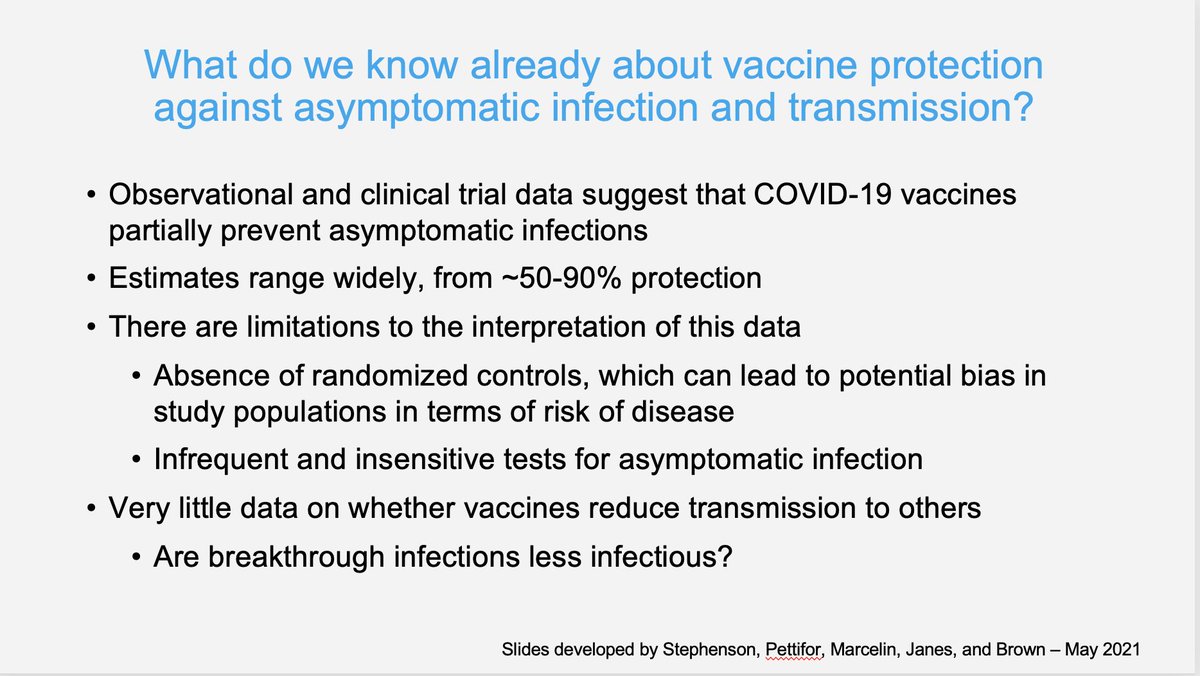
It seems like there is new data every day, so apologies if our slides are already missing something. But here is a summary of some good observational studies on the topic. 
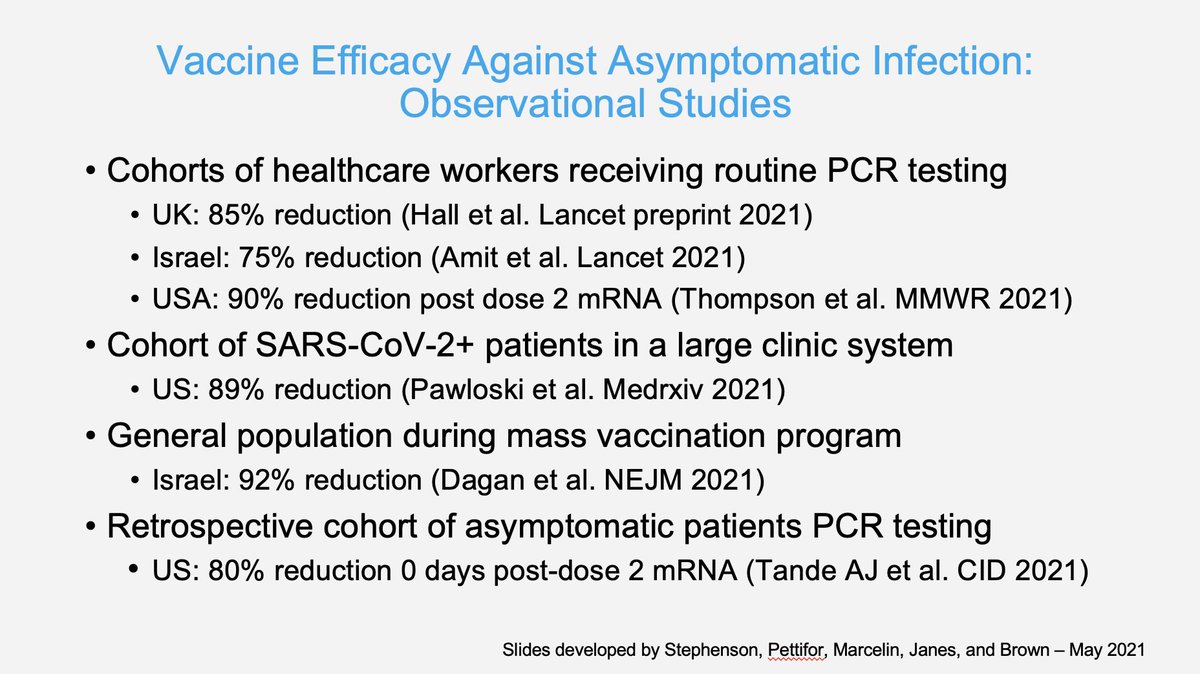
This question comes up a lot - a little data showing that asymptomatic infections can have a decent amount of viral shedding 
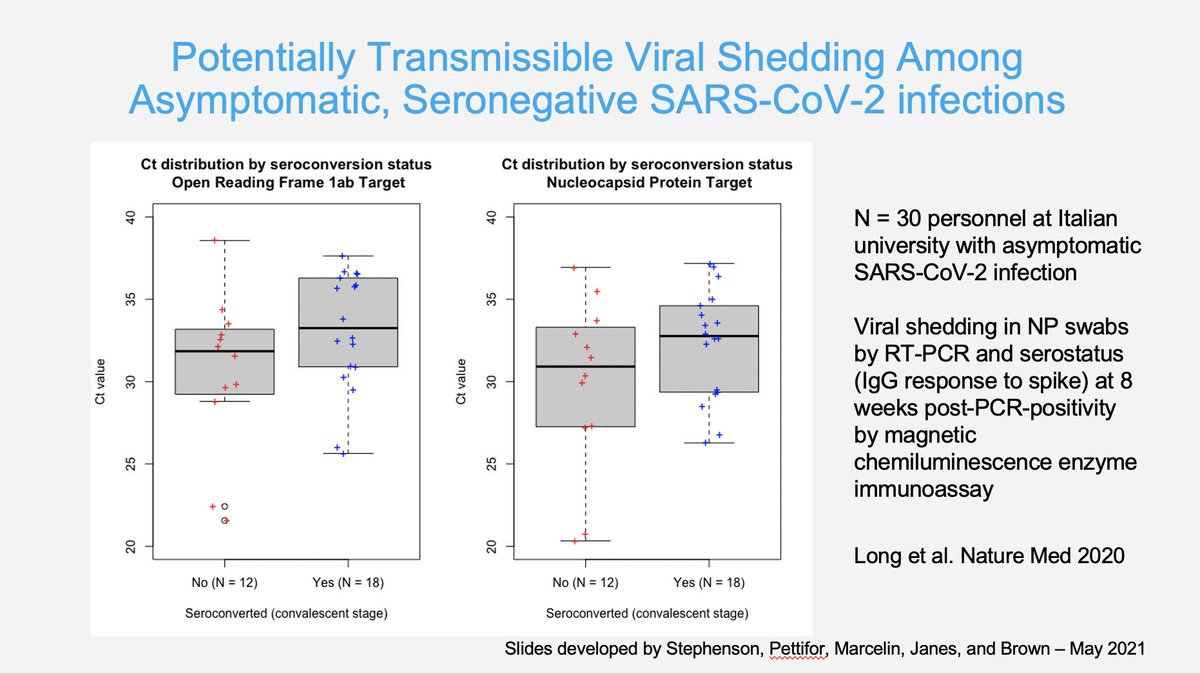
Might be simple for some, but it helps to remember how easily observational studies can be misinterpreted 
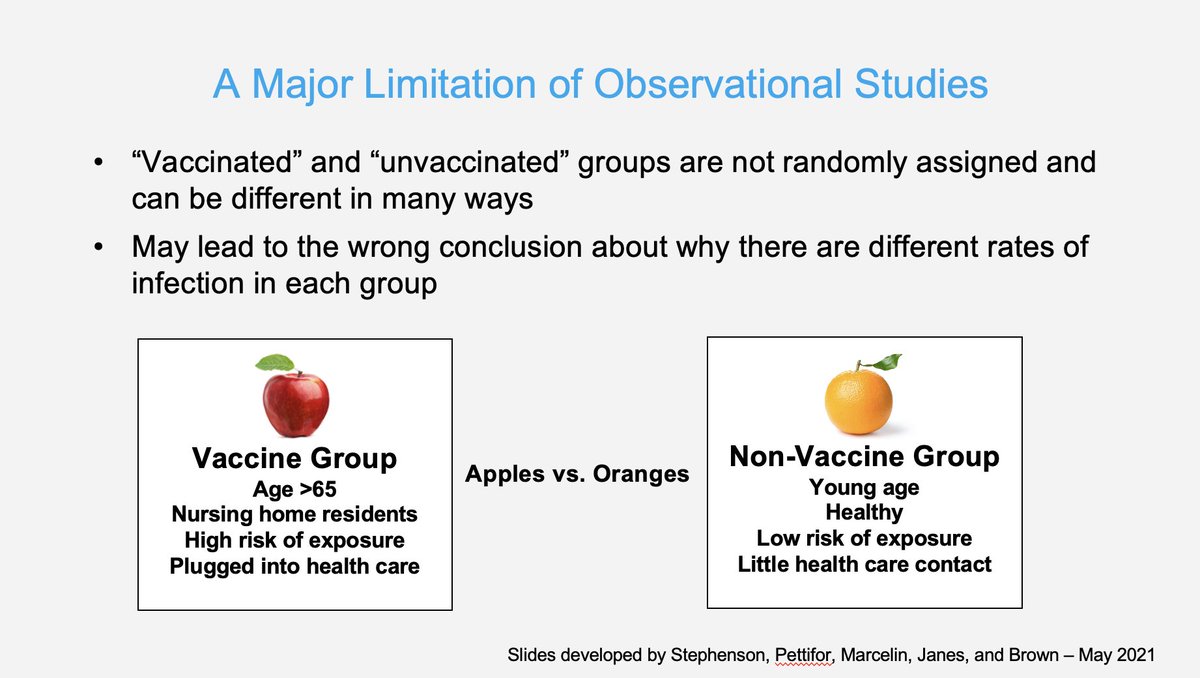
Measuring viral kinetics is extremely challenging - the frequency of testing is a huge factor in accuracy 
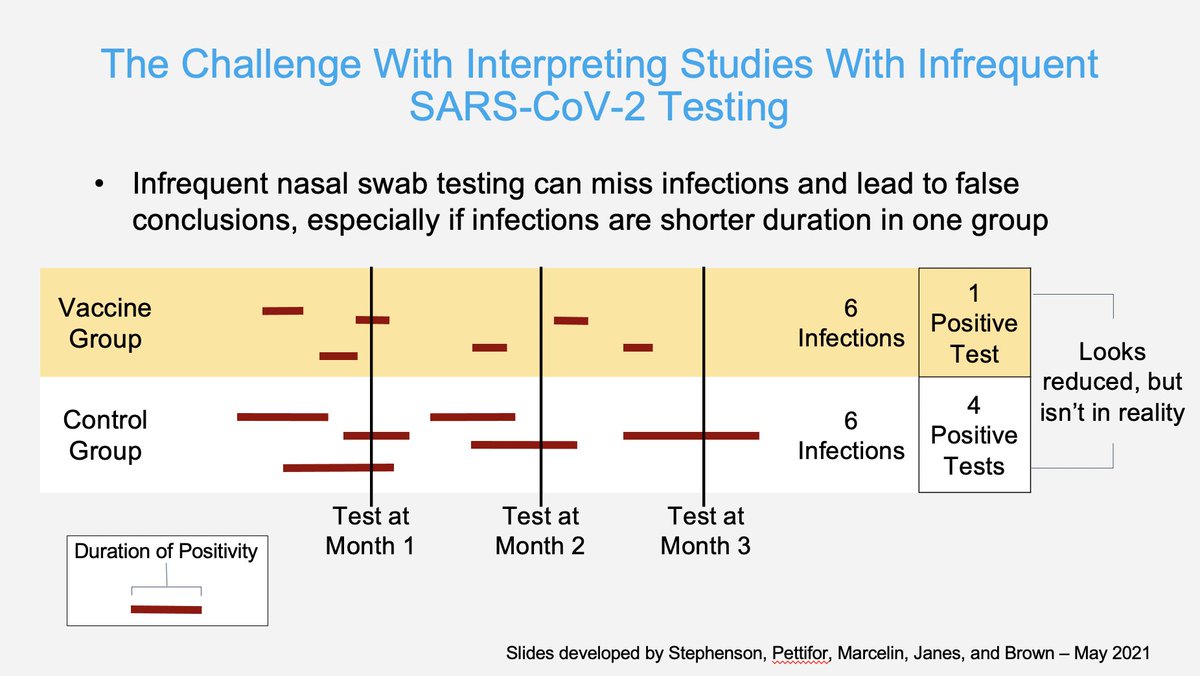
This is may be the most relevant point recently. We still don't know very much about transmission events following breakthrough infections. 
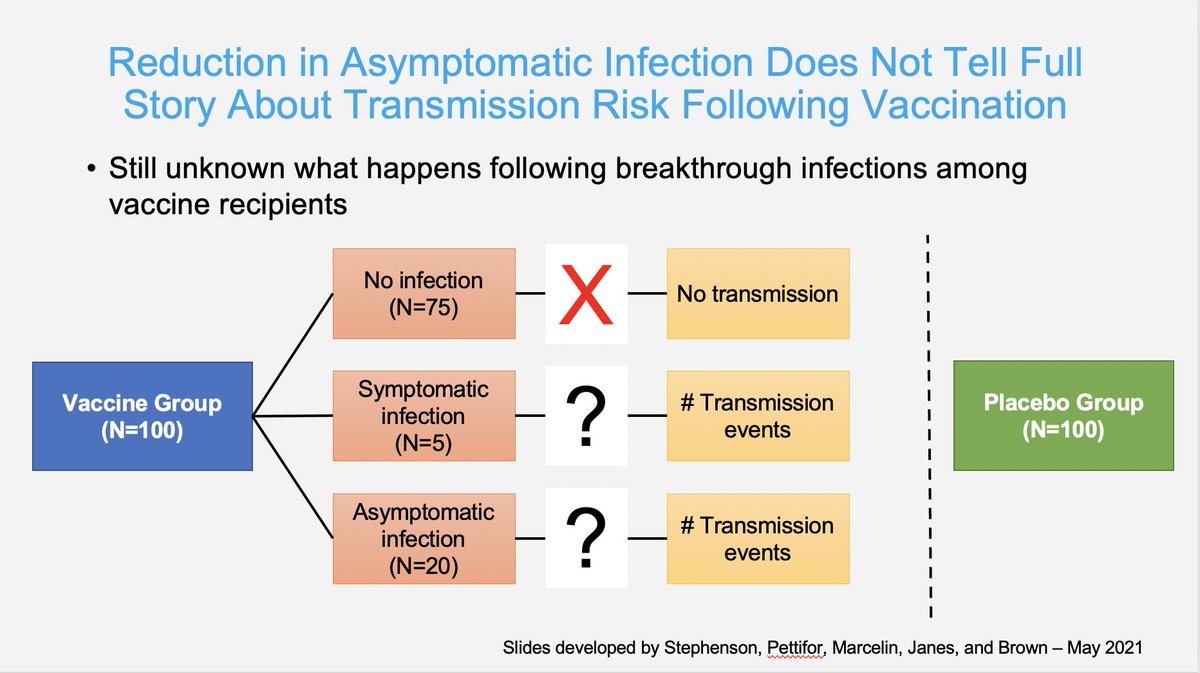
How is this all relevant to the masking policies? The point here is that we know that vaccines block asymptomatic infection, at least partially. But we don't know a lot about how much forward transmission can occur in the setting of breakthrough infections.
This data may not always be so important! If everyone is vaccinated, then it's not a big deal. We're all protected against symptomatic disease. And if there's extremely low amounts of virus circulating, it also may not be a big deal.
When this data really matters is when there is partial vaccination and moderate amounts of circulating virus. That's when we really need to accurately understand the risk of transmission following breakthrough infections. And we don't have that data yet.
This study reminds me of the above limitation. They looked at incidence rates among non-vaccinated pts at the same time that general incidence rates were dropping. Of course vaccines are amazing, but not sure how robust the findings are here.@walidgellad
nytimes.com/2021/05/19/hea…
nytimes.com/2021/05/19/hea…
• • •
Missing some Tweet in this thread? You can try to
force a refresh

















